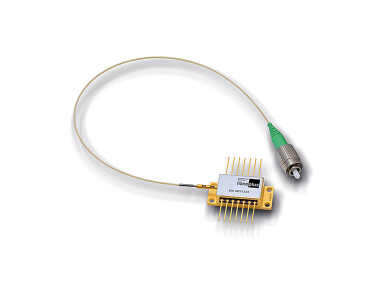Environmental Laboratory
Building trust in environmental monitoring data
Nov 22 2018
The accuracy and reliability of environmental monitoring data is of paramount importance, and certification schemes are available for instrument manufacturers to demonstrate the performance characteristics of their equipment. In the following article, Josh Thomas, from Ashtead Technology, will explain how the MCERTS scheme for environmental monitoring equipment provides several important advantages beyond regulatory compliance.
Background
If you lick your finger and hold it in the air, you might be able to guess the wind speed and possibly its direction. However, unsurprisingly another person in the same place, at the same time, might produce a completely different result. The levels of uncertainty in this method of environmental monitoring are therefore very high, so it is not appropriate for professional applications such as aerospace or shipping for example. Similarly, low cost instruments can be employed for indicative monitoring applications, but when accuracy and reliability are required, instruments have to be able to perform to a specification, and a promotional manufacturer’s leaflet is rarely sufficient proof of an instrument’s capability. Firstly, performance specifications have to be agreed, preferably in line with internationally accepted norms, and secondly, instruments have to be thoroughly tested by a respected, independent third party.
MCERTS is the Environment Agency’s Monitoring Certification Scheme. Administered by Sira Certification Service, it provides certification for equipment, personnel and inspection services, and underpins the quality and reliability of monitoring data. As such, environmental permits issued by the Agency specify a requirement for monitoring equipment to have MCERTS. Other regulatory authorities such as local councils may also specify MCERTS in their permits and also in planning permissions.
Reasons for using MCERTS equipment
When a permit specifies MCERTS equipment, it has to be employed for environmental monitoring purposes. However, there are a number of other reasons for choosing this equipment.
Monitoring data is used for a wide variety of non-regulatory purposes, so it is important that it is accurate. For example, emissions monitoring data play a significant role in the choice of abatement equipment, so accuracy helps to ensure that technologies (and costs) are appropriate. Emissions data are also used to optimise process control. The components of emissions in combustion processes, for example, provide an indication of the efficiency of combustion and help process managers to ensure a clean burn.
The use of MCERTS equipment also sends a strong message to stakeholders that the organisation is committed to accurate environmental measurements; one of the key elements in an environmental management policy.
Occasionally environmental measurements are challenged; either in court or in the media by lobby groups. In such circumstances, it is vitally important to be able to deliver scientifically defensible data from certified instruments.
MCERTS approved monitors are also employed by organisations to protect the health and safety of staff, visitors and local residents. So again, it is important that an organisation trusts the data that it generates, and that this data is scientifically defensible.
Despite all of the reasons mentioned above, users may be tempted to choose cheaper un-certified equipment because, at the time, there appeared to be no strong justification for an MCERTS instrument. However, any monitoring data has the potential to be the subject of scrutiny at a later data, so it makes sense to purchase certified equipment; to future-proof environmental monitoring.
Emissions monitoring
Emissions to air from combustion processes are tightly regulated, and one of the most popular instruments from the Ashtead Technology fleet is the MCERTS approved Testo 350 emissions and combustion analyser. Available to rent or purchase, the Testo 350 is a portable analyser designed for service measurement, tuning and compliance testing on industrial engines, burners, boilers and gas turbines. The instrument is able to measure up to 6 parameters with sensors available for O2, SO2, CO, CO2, NO2, NO, Hydrocarbons, COlow, NO, NOlow, NO2, CxHy and H2S.
Monitoring particulates
The government has estimated that 29,000 premature deaths occur in the UK every year as a result of particulate pollution. Dust monitoring is therefore another application with a high demand for MCERTS instruments in the search for ways to reduce exposure. Researchers and consultants are looking to identify pollution hotspots and the factors affecting them, and Government and local authorities are looking for successful mitigation measures and infrastructure investments with beneficial effects on air quality. At the same time, planning authorities are imposing monitoring conditions on proposed developments, and with so much at stake it is vital that measurements are accurate and reliable.
The TSI DustTrak Environmental is ideal for these applications. As an MCERTS approved ambient air quality monitor, it is certified for monitoring PM2.5, PM10 and total PM. Furthermore, it can be mains or battery powered, and is web-enabled, which means that it can be quickly and easily deployed in almost any location; from a building site to a busy urban street. This remote connectivity means that users have access to live data, and receive alarms automatically by text or email. However, if a local authority is to exercise its regulatory powers; or a lobby group is to be taken seriously; or a developer is to be seen to be green, and if air quality investments are to be based on solid science; monitoring data must be accurate and reliable.
In many respects, environmental monitoring is about risk reduction; protecting the environment, occupational safety and brand reputation. We can hold a wet finger in the air and hope for the best, or we can invest in MCERTS instruments… and expect the best.
Digital Edition
AET 28.4 Oct/Nov 2024
November 2024
Gas Detection - Go from lagging to leading: why investment in gas detection makes sense Air Monitoring - Swirl and vortex meters will aid green hydrogen production - Beyond the Stack: Emi...
View all digital editions
Events
Nov 26 2024 Paris, France
Nov 27 2024 Istanbul, Turkey
H2O Accadueo International Water Exhibition
Nov 27 2024 Bari, Italy
Biogas Convention & Trade Fair 2024
Nov 27 2024 Hanover, Germany
Dec 02 2024 London, UK









.jpg)









